
The University of North Carolina at Greensboro is a public research university in Greensboro, North Carolina. It is part of the University of North Carolina system. It is accredited by the Southern Association of Colleges and Schools Commission on Colleges to award baccalaureate, master's, specialist, and doctoral degrees.

Clemson University is a public land-grant research university in Clemson, South Carolina. Founded in 1889, Clemson is the second-largest university by enrollment in South Carolina. For the fall 2019 semester, the university enrolled a total of 20,195 undergraduate students and 5,627 graduate students, and the student/faculty ratio was 18:1. Clemson's 1,400-acre (570 ha) campus is in the foothills of the Blue Ridge Mountains. The campus now borders Lake Hartwell, which was formed by the dam completed in 1962. The university manages the nearby 17,500-acre (7,100 ha) Clemson Experimental Forest that is used for research, education, and recreation.
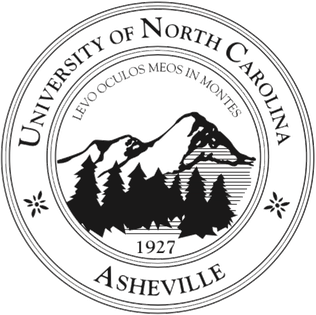
The University of North Carolina at Asheville is a public liberal arts university in Asheville, North Carolina, United States. UNC Asheville is the designated liberal arts institution in the University of North Carolina system. It is a member and the headquarters of the Council of Public Liberal Arts Colleges.
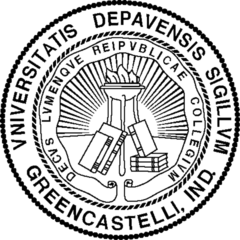
DePauw University is a private liberal arts college in Greencastle, Indiana. It was founded in 1837 as Indiana Asbury University and changed its name to DePauw University in 1884. DePauw is a member of both the Great Lakes Colleges Association and the North Coast Athletic Conference.

Vassar College is a coeducational private liberal arts college in Poughkeepsie Town, New York, United States. Founded in 1861 by Matthew Vassar, it was the second degree-granting institution of higher education for women in the United States. The college became coeducational in 1969.

Sarah Lawrence College is a private liberal arts college in Yonkers, New York. Originally a women's college, Sarah Lawrence became coeducational in 1968. A Sarah Lawrence scholarship, particularly in the humanities, performing arts, and writing, places high value on independent study.

Hobart and William Smith Colleges are private liberal arts colleges in Geneva, New York. They trace their origins to Geneva Academy established in 1797. Students can choose from 45 majors and 68 minors with degrees in Bachelor of Arts, Bachelor of Science, Master of Arts in Teaching, Master of Science in Management, and Master of Arts in Higher Education Leadership. The colleges have graduated 35 Fulbright Scholars, three Rhodes Scholars, and numerous Marshall Scholars, Rangel Fellows, Truman Scholars, Emmy, and Pulitzer awardees as well as United States senators, House representatives, and a United States Supreme Court justice. Hobart and William Smith Colleges is a member of the New York Six Liberal Arts Consortium, an association of highly selective liberal arts colleges. It is frequently ranked among the top 100 liberal arts colleges in the United States.
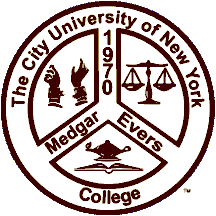
Medgar Evers College is a public college in New York City. It is a senior college of the City University of New York (CUNY), offering baccalaureate and associate degrees. It was established in 1970 in central Brooklyn. It is named after Medgar Wiley Evers, an African American civil rights leader assassinated on June 12, 1963.
Columbia College is a private liberal arts college in Columbia, South Carolina. Founded in 1854 by the United Methodist Church as a women's liberal arts college, Columbia College became fully coeducational in 2020 welcoming its first coed residential class in Fall 2021. It also offers evening, graduate, and online programs for women and men.

The Medical University of South Carolina (MUSC) is a public medical school in Charleston, South Carolina. It opened in 1824 as a small private college aimed at training physicians and has since established hospitals and medical facilities across the state. It is one of the oldest continually operating schools of medicine in the United States and the oldest in the Deep South.

Francis Marion University is a public university near Florence, South Carolina. It is named in honor of American Revolutionary War Brigadier General Francis Marion.

Wofford College is a private liberal arts college in Spartanburg, South Carolina. It was founded in 1854. The 175-acre (71 ha) campus is a national arboretum and one of the few four-year institutions in the southeastern United States founded before the American Civil War that still operates on its original campus.
Randolph–Macon College is a private liberal arts college in Ashland, Virginia. Founded in 1830, the college has an enrollment of more than 1,500 students. It is the second-oldest Methodist-run college in the country, and the oldest in continuous operation. The college primarily offers bachelor's degrees.
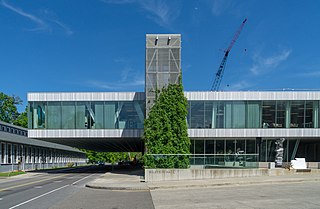
The College of Architecture, Art, and Planning (AAP) is the school of architecture at Cornell University in Ithaca, New York. It offers 20 undergraduate and graduate degrees in five departments: architecture, art, urban planning, real estate, and design technology. Aside from its main campus in Ithaca, AAP offers programs in Rome, Italy and in New York City, New York.
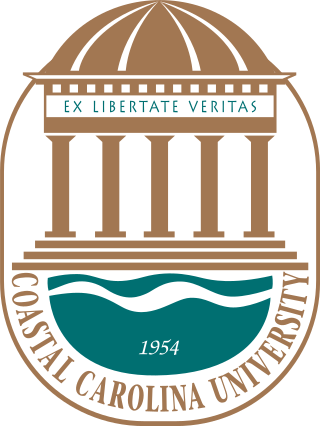
Coastal Carolina University is a public university in Conway, South Carolina. Founded in 1954 as Coastal Carolina Junior College, and later joining the University of South Carolina System as USC Coastal Carolina, it became an independent university in 1993.

The Citadel, The Military College of South Carolina, commonly known simply as The Citadel, is a public senior military college in Charleston, South Carolina. Established in 1842, it is one of six senior military colleges in the United States. It has 18 academic departments divided into five schools offering 31 majors and 57 minors. The military program is made up of cadets pursuing bachelor's degrees who live on campus. The non-military programs offer 12 undergraduate degrees, 26 graduate degrees, as well as evening and online programs with seven online graduate degrees, three online undergraduate degrees, and three certificate programs.

The Nathaniel Russell House is an architecturally distinguished, early 19th-century house at 51 Meeting Street in Charleston, South Carolina, United States. Built in 1808 by wealthy merchant and slave trader Nathaniel Russell, it is recognized as one of the United States' most important neoclassical houses. It was designated a National Historic Landmark in 1973.
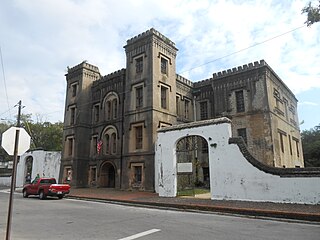
The Old Charleston Jail is a site of historical and architectural significance in Charleston, South Carolina. Operational between 1802 and 1939, it held many notable figures, among them Denmark Vesey, Union officers during the Civil War, high-seas pirates, and Lavinia Fisher. While it has become a popular tourist destination in recent years, it remains one of the most notable historic sites in Charleston that has not been the target of a comprehensive preservation and/or renovation effort. It is also commonly referred to as the Old City Jail by the people of Charleston, South Carolina.

Morrill Hall is a campus building of the University of Vermont (UVM), which is located on the southeast corner of the "University Green" in Burlington, Vermont. The building was named after U.S. Senator, Justin Smith Morrill who authored the Morrill Land-Grant Acts of 1862 and 1890, which created the American Land-Grant universities and colleges. Senator Morrill also served as a trustee of the university from 1865 until 1898. The building was constructed during 1906–07 to serve as the home of the UVM Agriculture Department and the Agricultural Experiment Station. It was added to National Register of Historic Places as part of University Green Historic District on April 14, 1975. As of 2015, the building continues to house the College of Agriculture and Life Sciences and the UVM Agricultural Extension Service.
Albert Simons, had a sixty-year career as an architect and preservationist in Charleston, South Carolina, where he is known for his preservation work and architectural design. He played a key role in the Charleston Renaissance. Simons helped to create many nationally prominent preservation functions such as the zoning ordinance for the historic district, the first such ordinance in America, with municipal austerity, and the first Board of Architectural Review. As a professor at the College of Charleston for over 20 years, he started the School of the Arts whose building is named after him and is honored yearly through the Simons Medal of Excellence.
























